Pit Fire
Firing i an earthen pit. The firing method is risky for the ceramics, which are exposed to large temperature differences during firing. It is a lot of work, and at the same time it is very suitable as a social activity together with other potters.
See the process in overview form:
See the process in overview form:
-
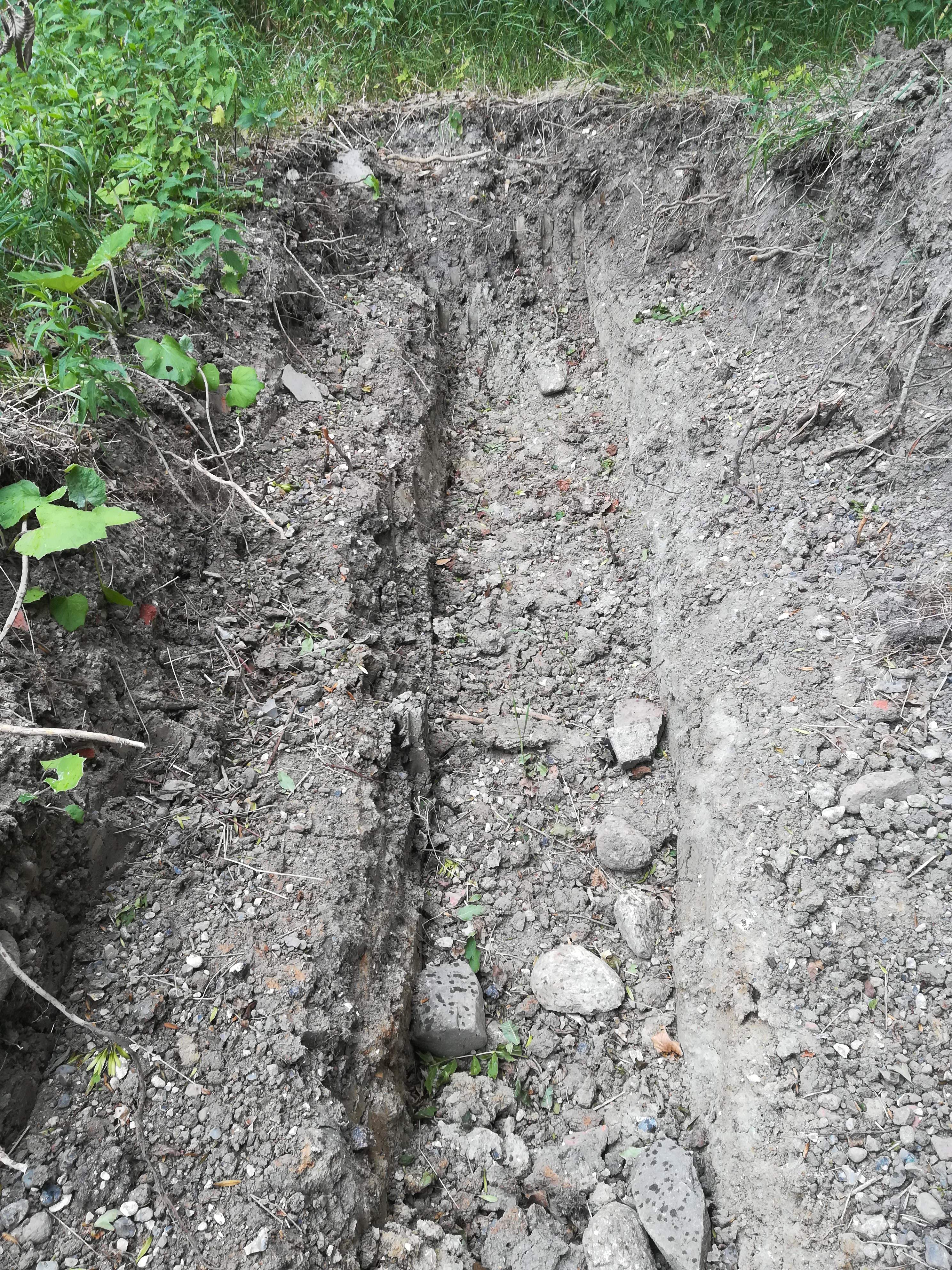
The Kiln. The kiln room is dug in the same clay as potters did in ancient times. -

Lining. The Kiln is lined with stones to keep a more even heat for a longer time. -
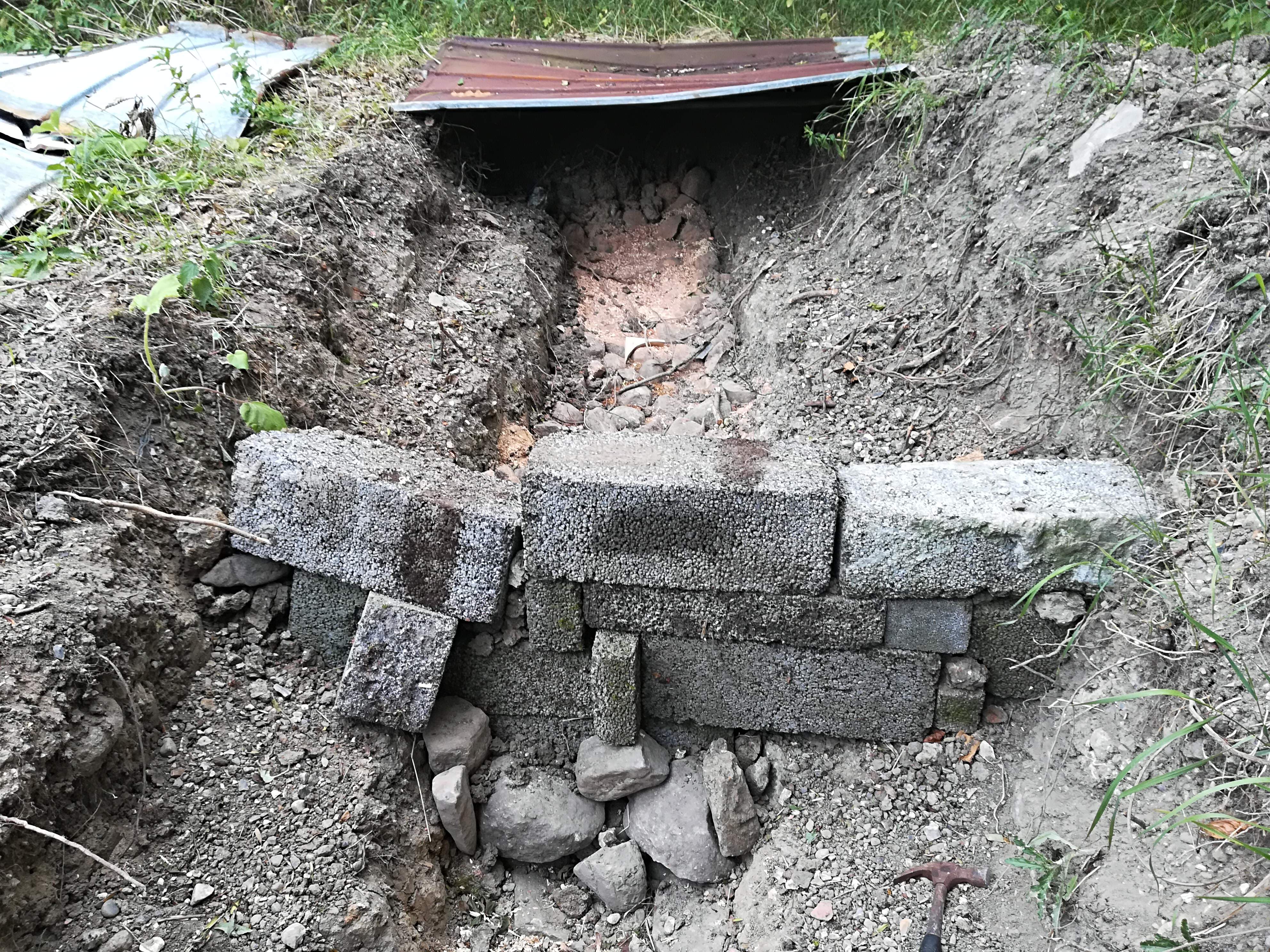
One end of the Kiln. The chamber is finished with a stone setting that makes it possible to adjust the oxygen supply. -
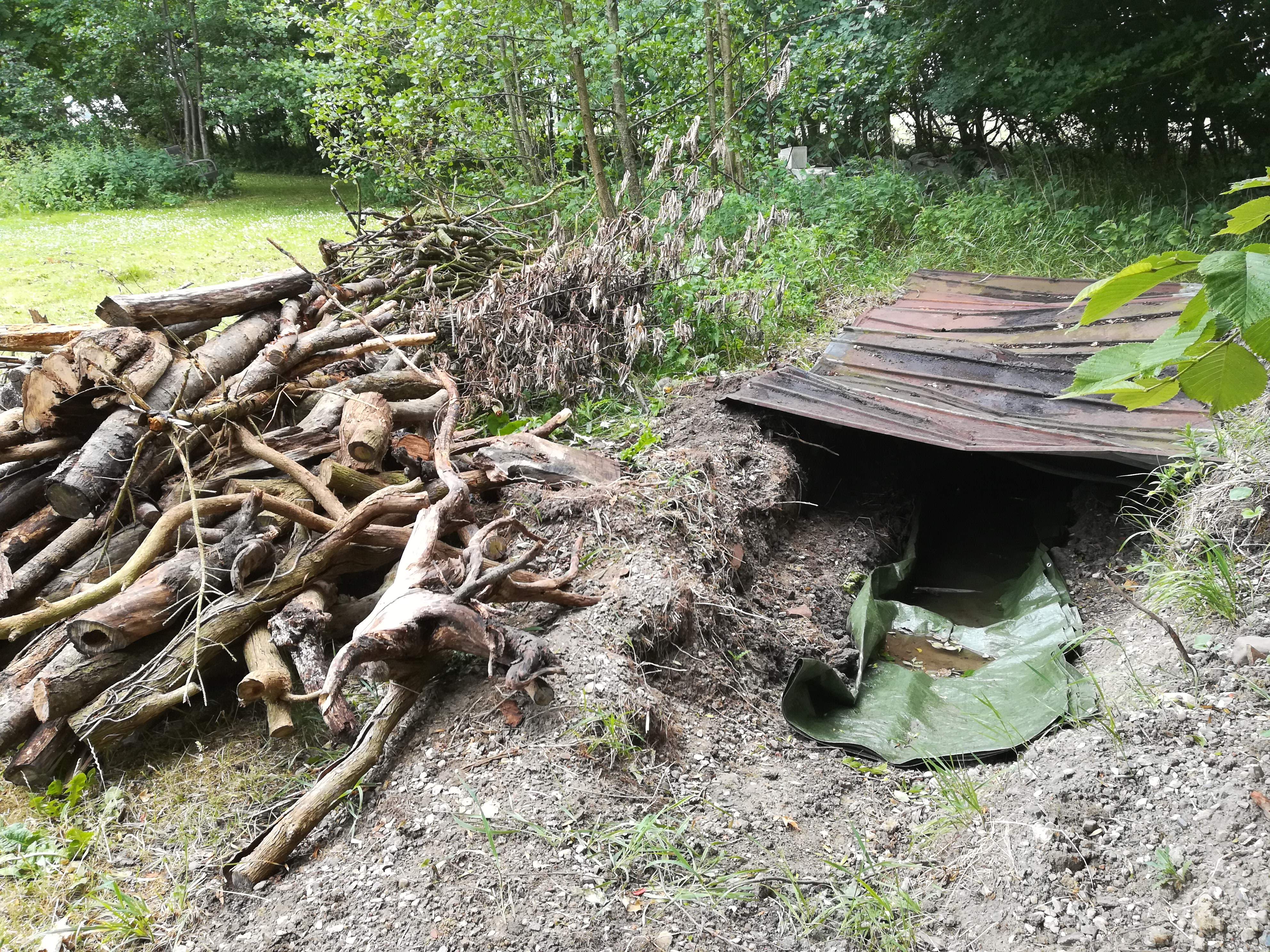
The Kiln. The Kiln is covered from the rain - and the firewood is ready. -

Pot. Pot prepped for firing / Seashells. -
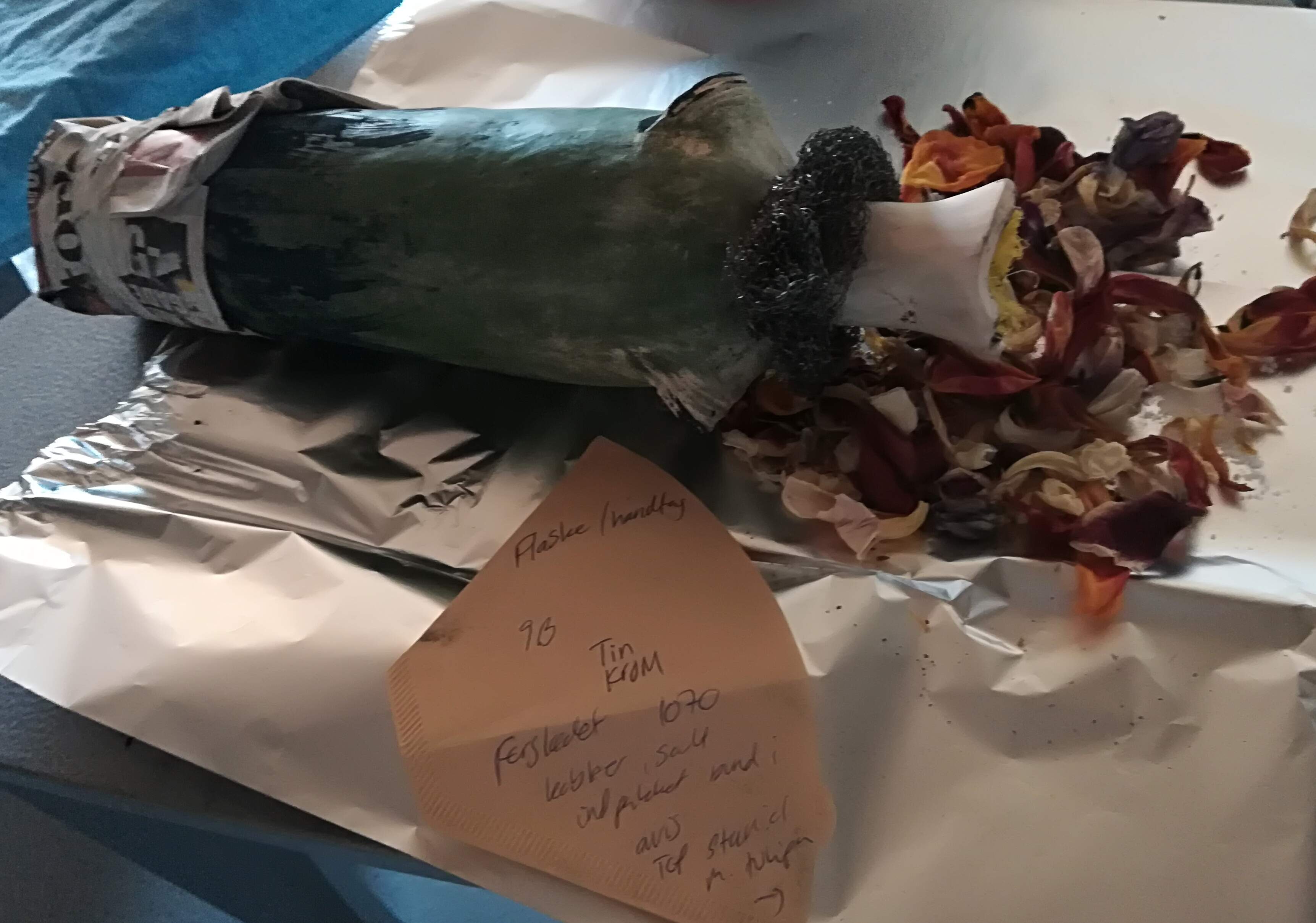
Bottle. Bottle is "muffle-packed" in tin foil with dried leaves and other stuff. -
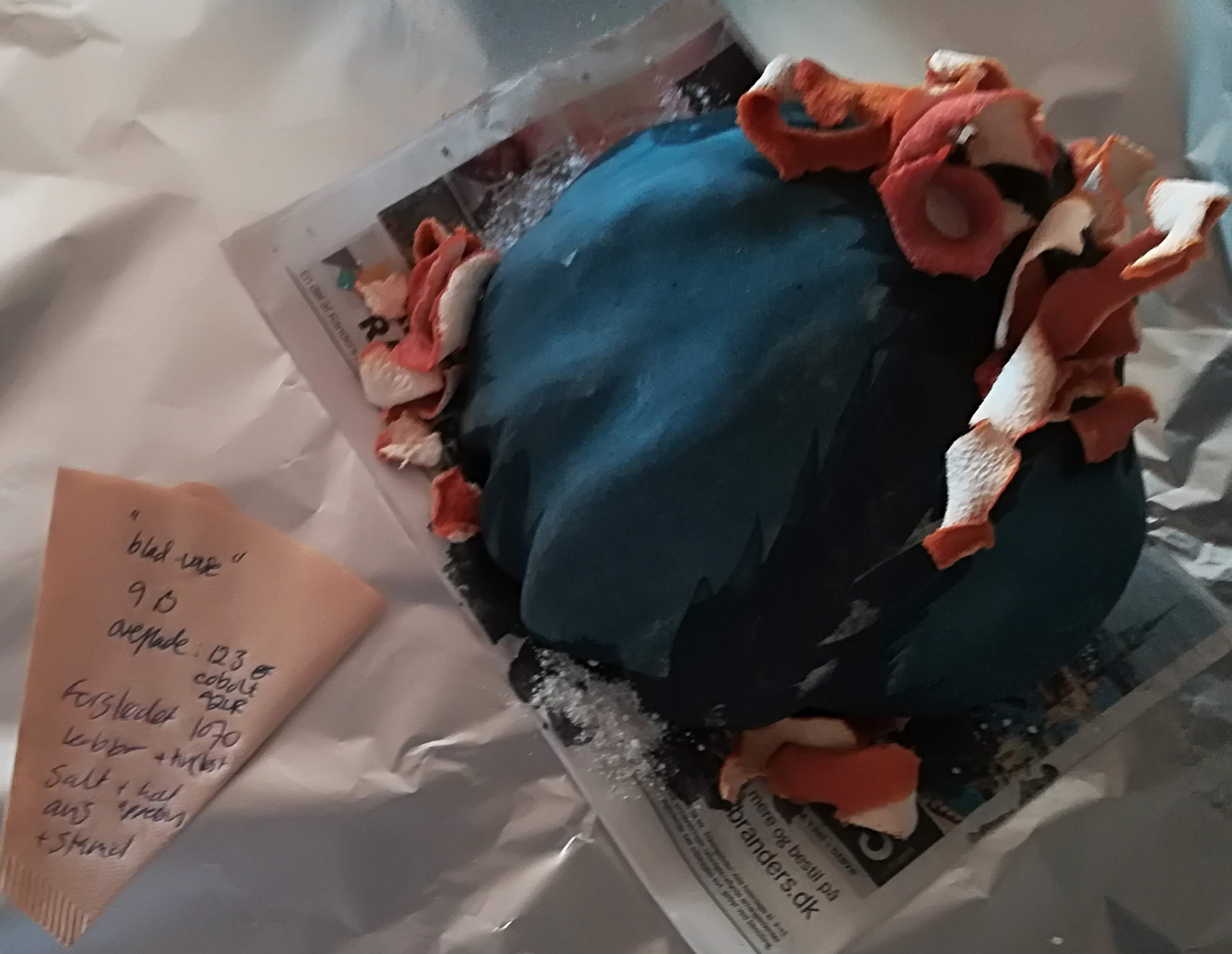
Vase. Prepped for firing. -
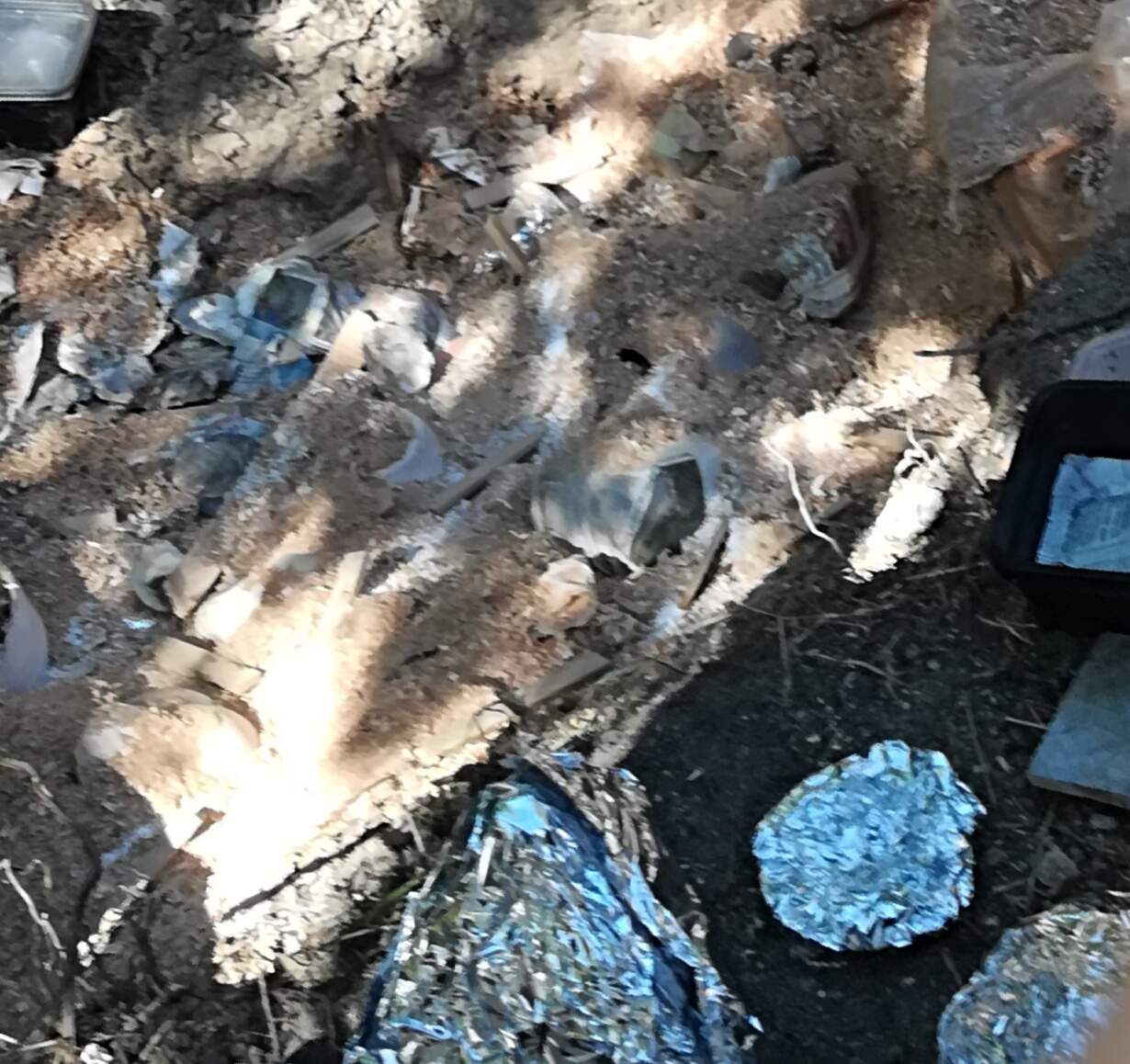
Sawdust bonfire. Pots are packed in sawdust at the buttom. -

Fire. The very yellow is burning salt. -
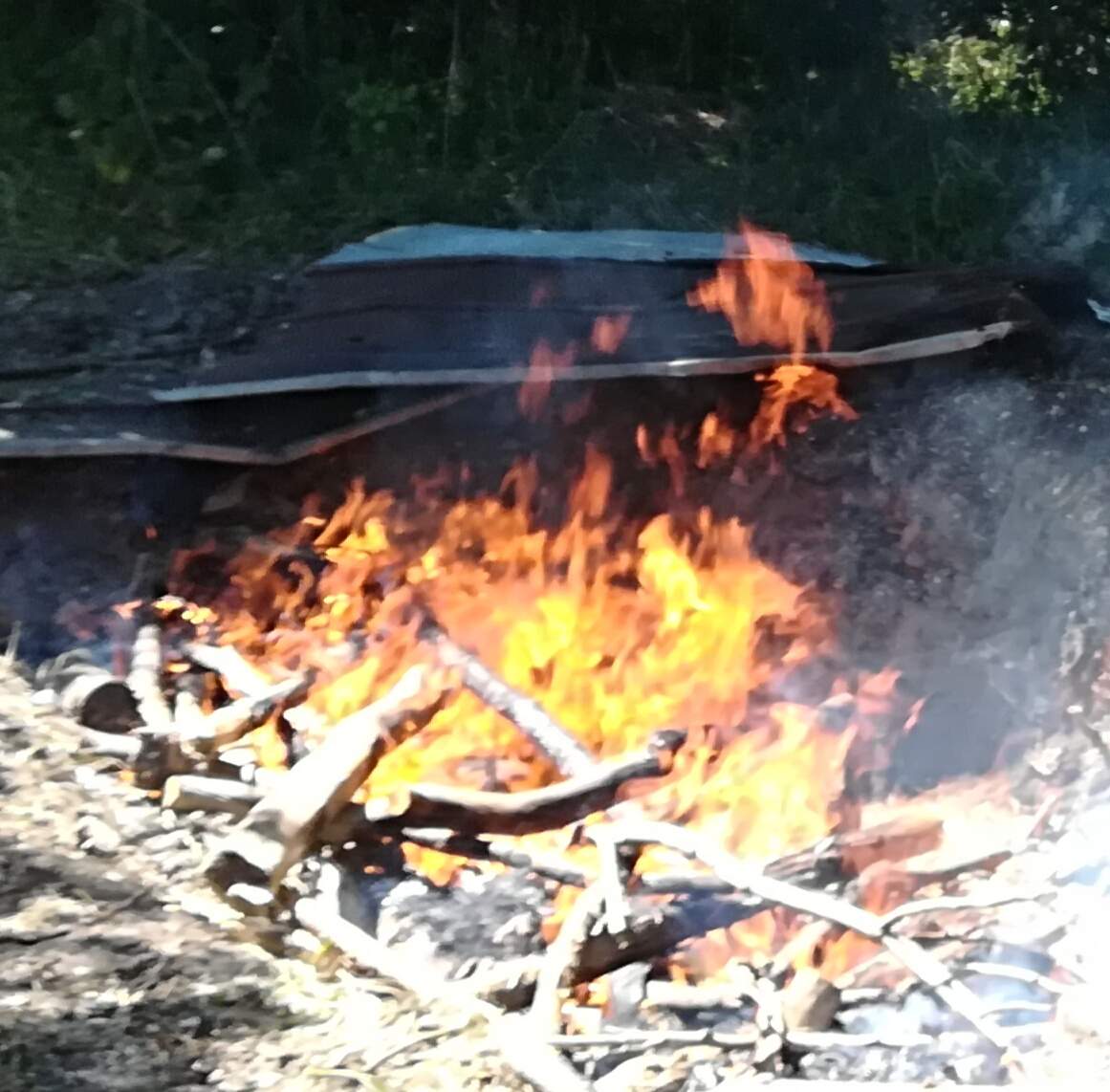
Fire. The pots are warm and well under the flames. Flames and oxygen affects the result. -
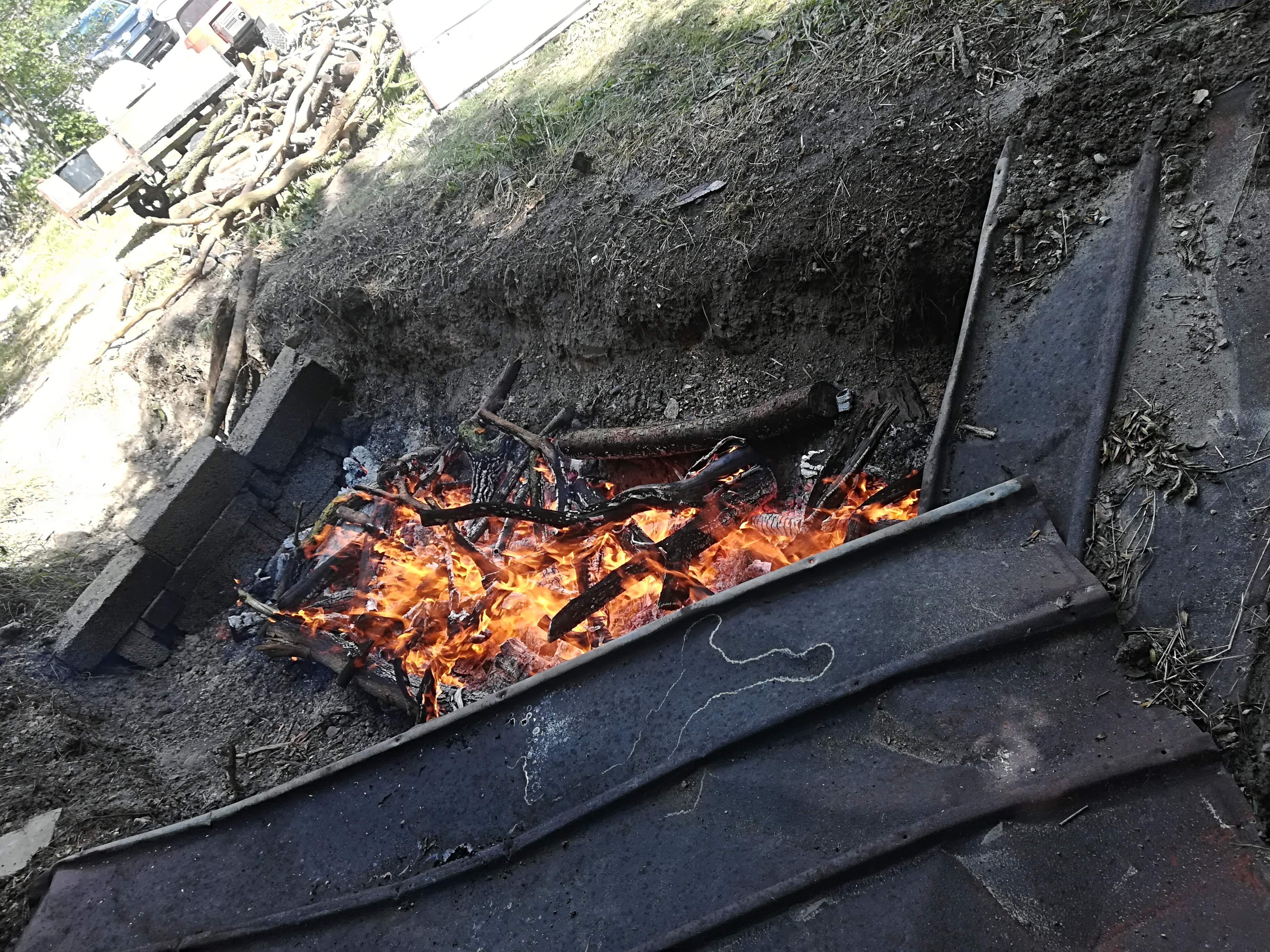
Fire. The fire burns more quietly now. -
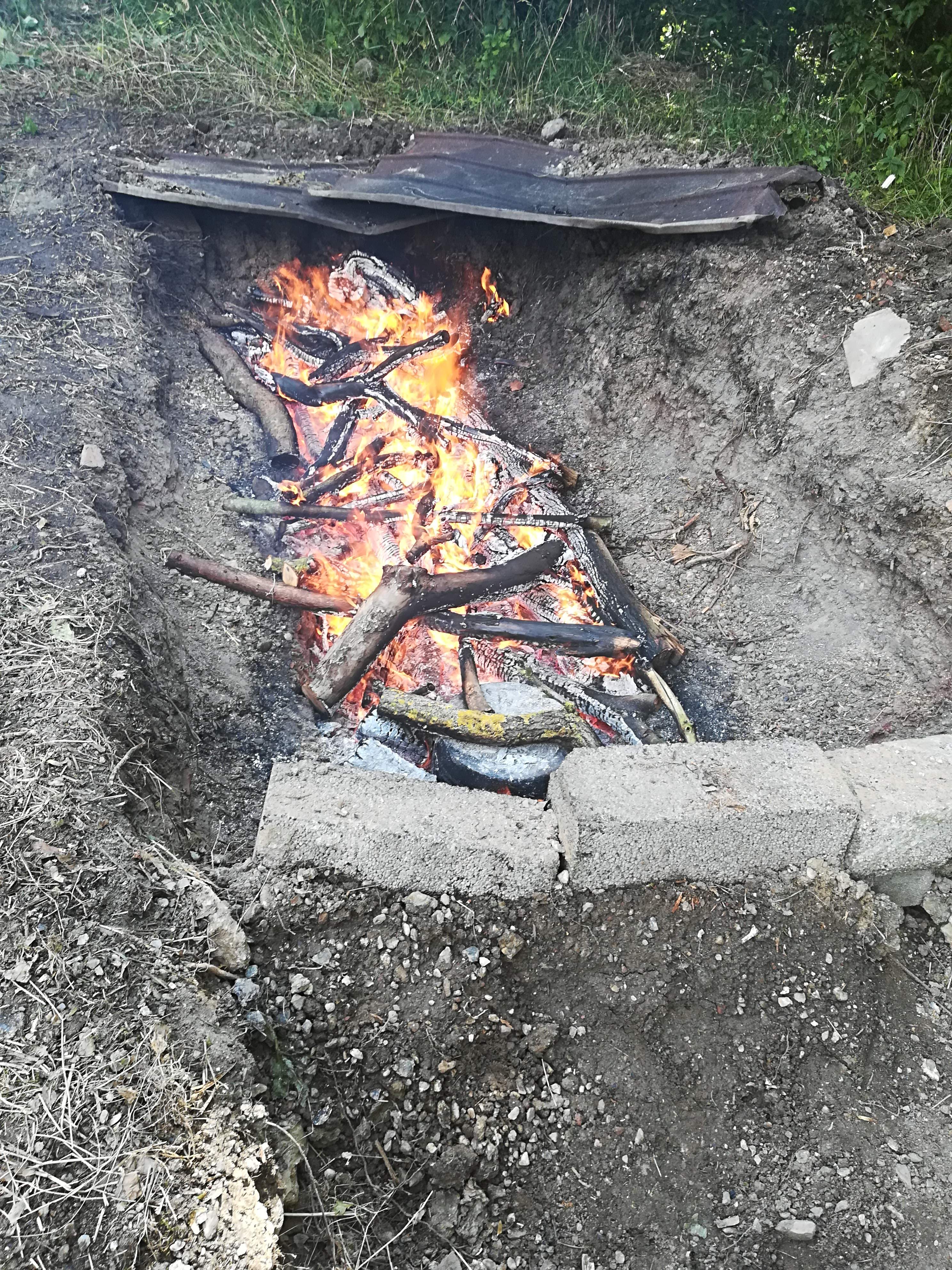
Fire. Thick fire does the job. -

The Kiln. The Kiln is on and seen from a distance. -

The Kiln. The Kiln is on and seen from a distance. -

Lids. The Kiln is closed down and burns out quietly. -
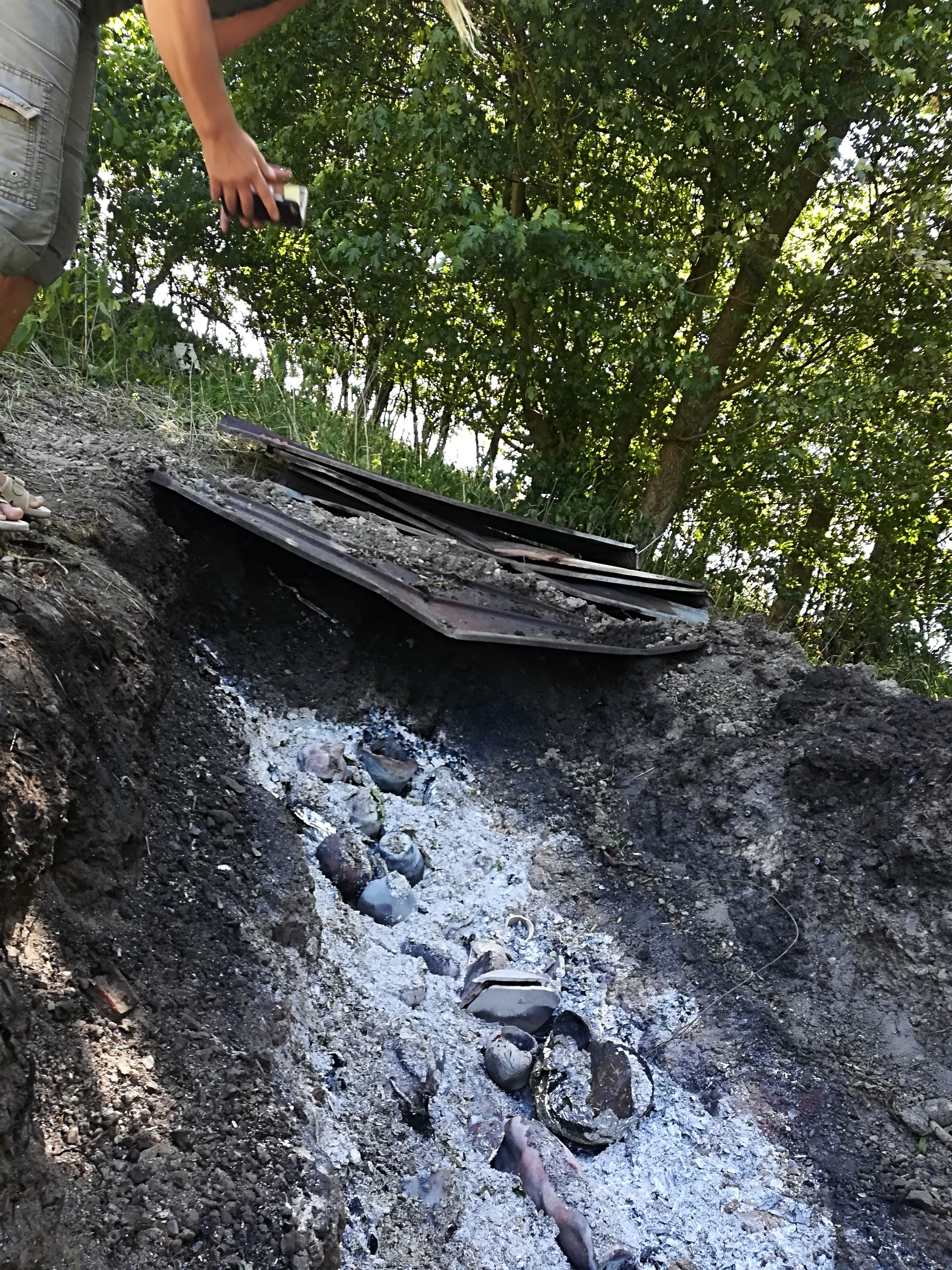
Kiln unloading. The pottery can now be seen in the ashes. -

Kiln unloading. Pots in the kiln. -
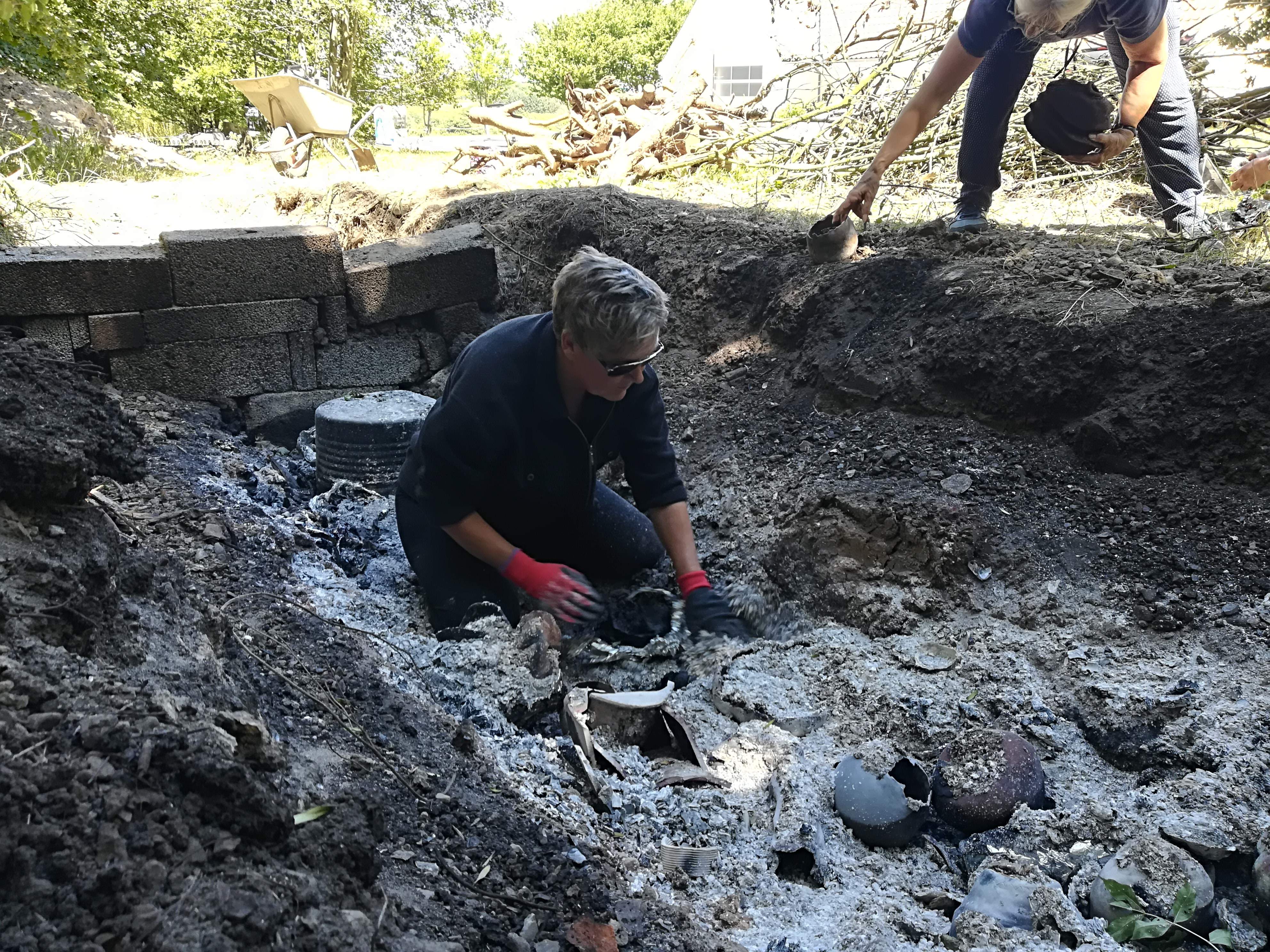
Kiln unloading. The pots are carefully removed from the ashes. -
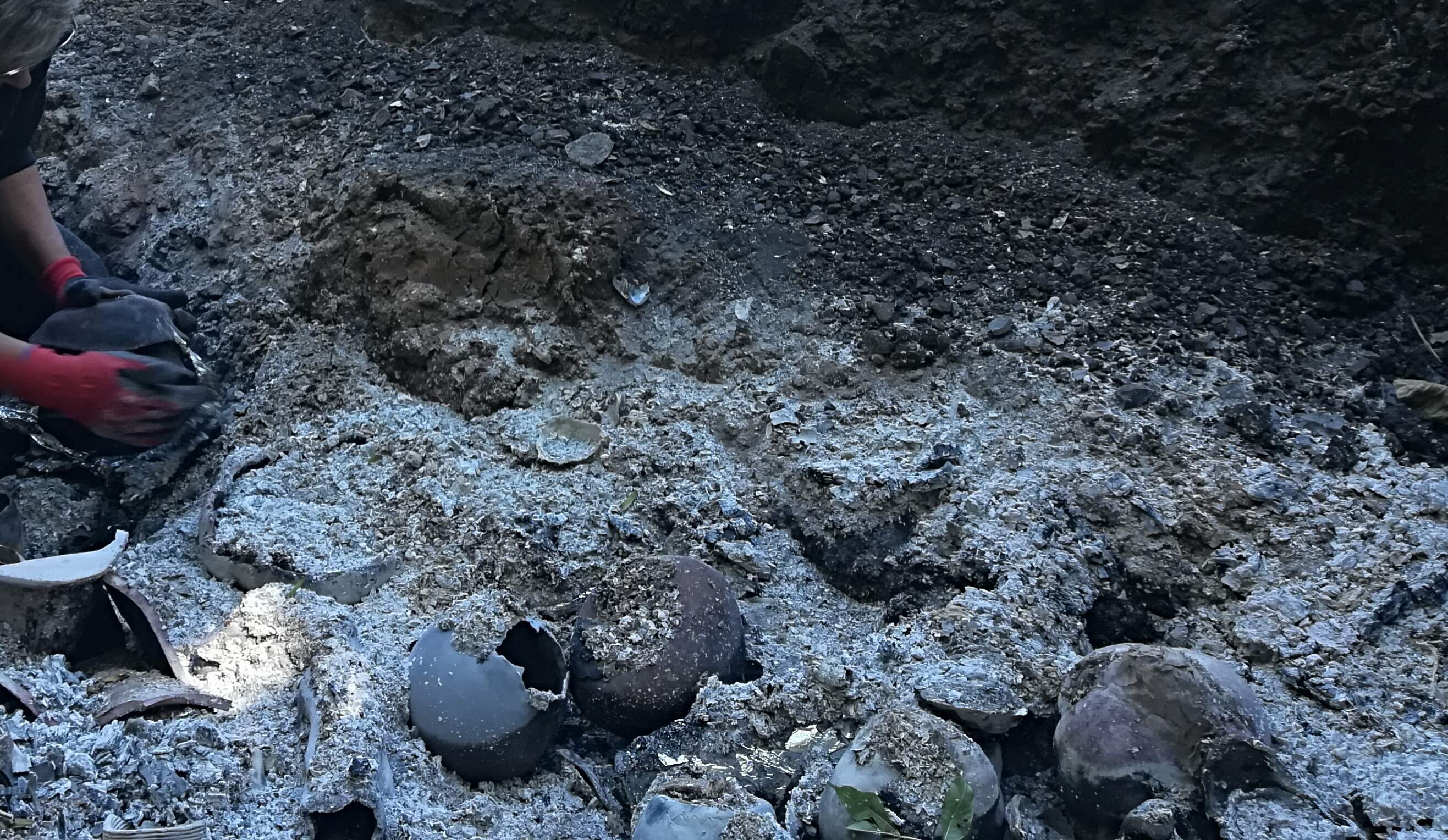
Kiln unloading. Pots are dug out of the ashes by hand. -
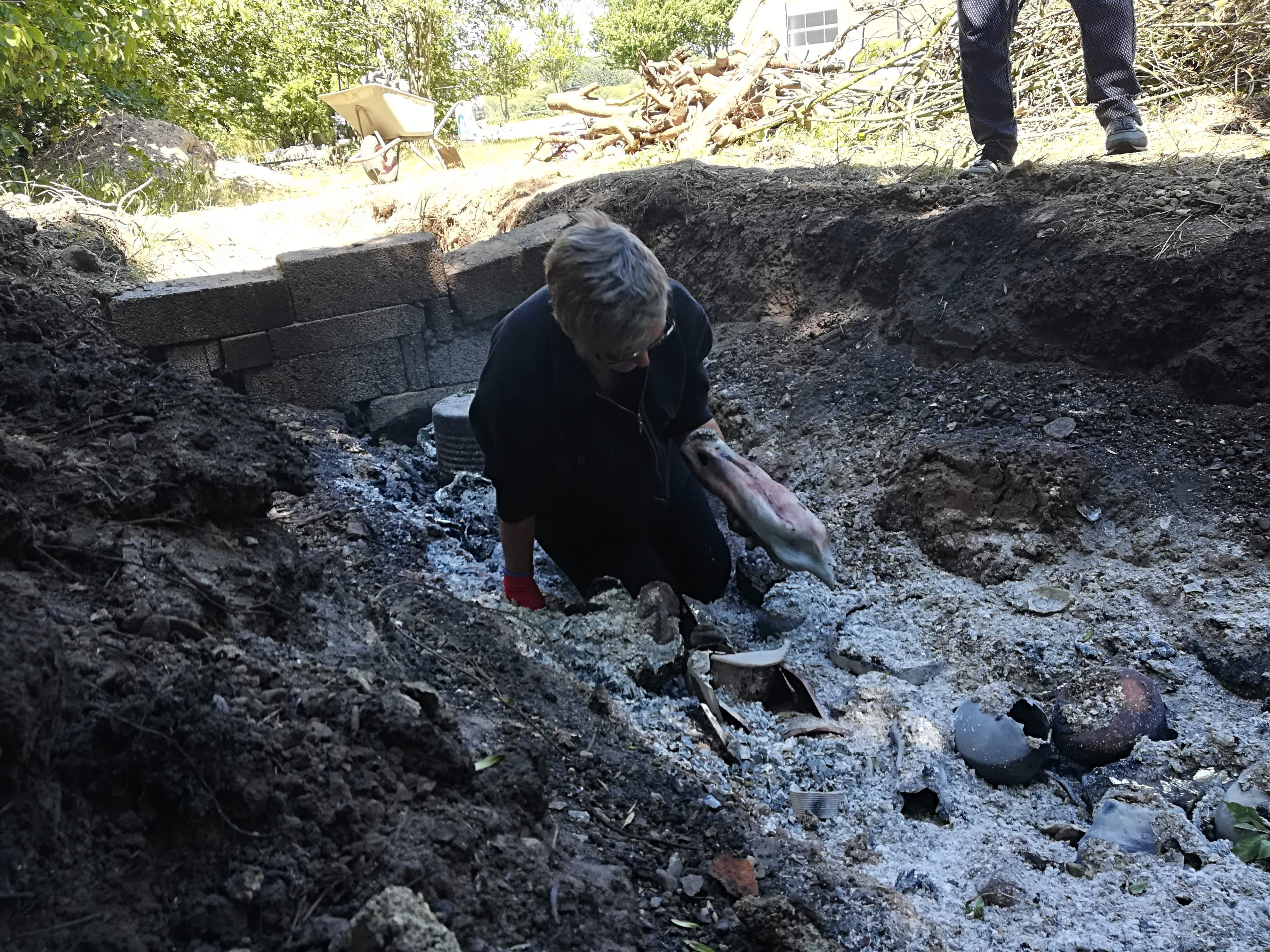
Kiln unloading. Pots are dug out of the ashes by hand -
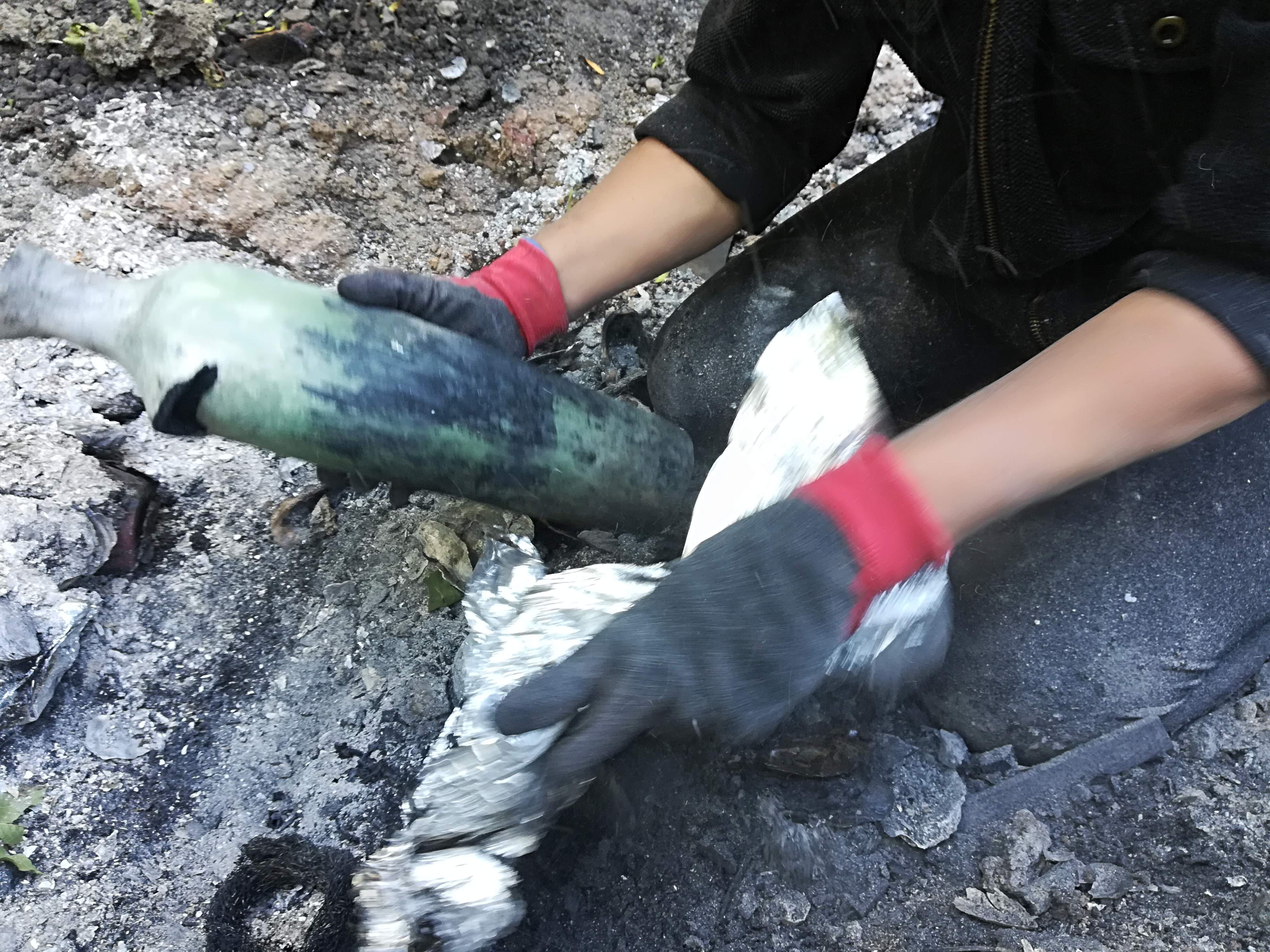
Kiln unloading. The bottle from before is dug out. -

Kiln unloading The piece has burned in a closed Atmosphere and is being unpacked. -
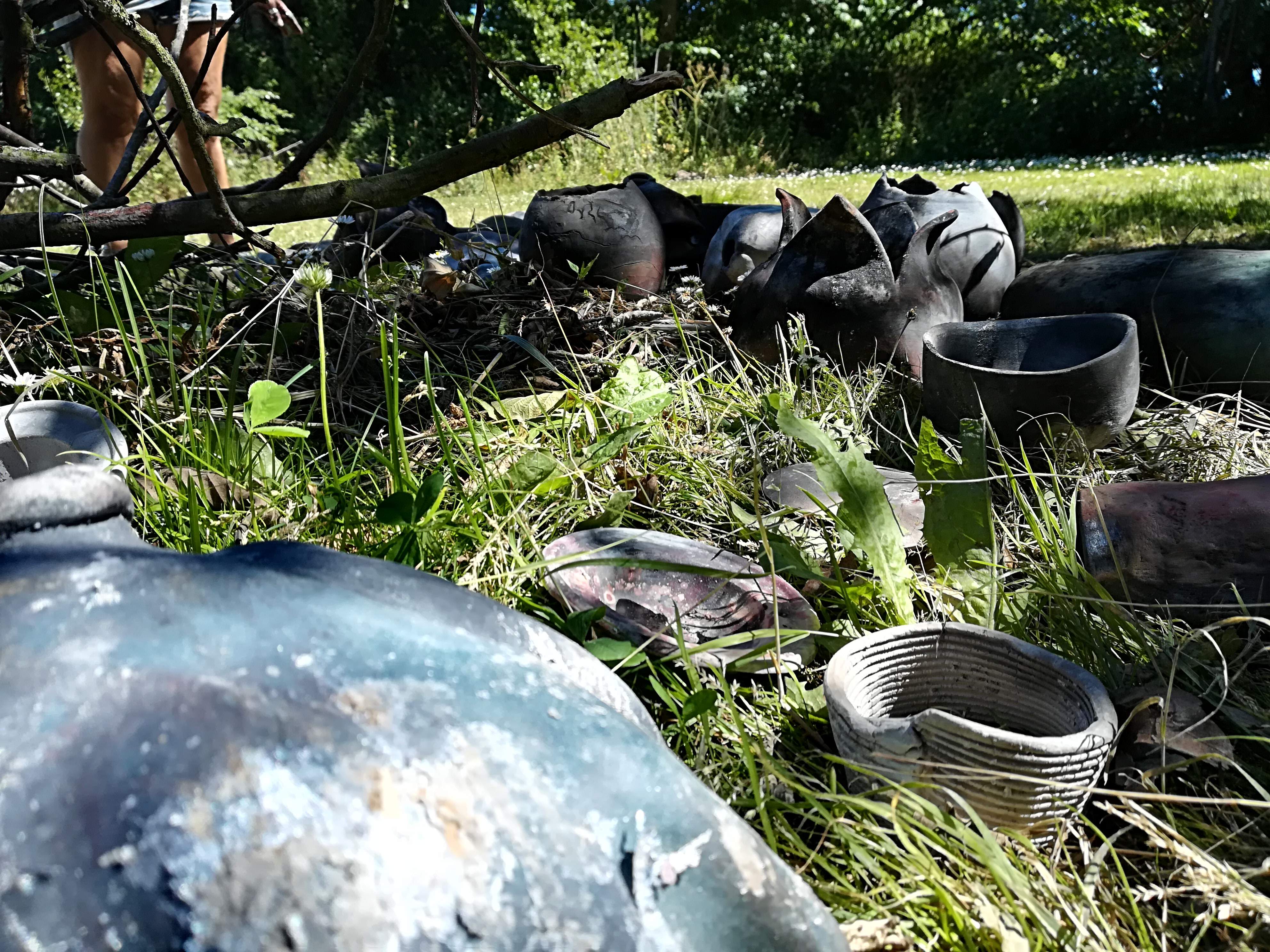
Kiln unloading. The pottery laid on the grass. -

Kiln unloading. The pots are evaluated. -

Kiln unloading. The results are discussed. -

Bottles. Washed and waxed. -

Vase. Washed and waxed. -
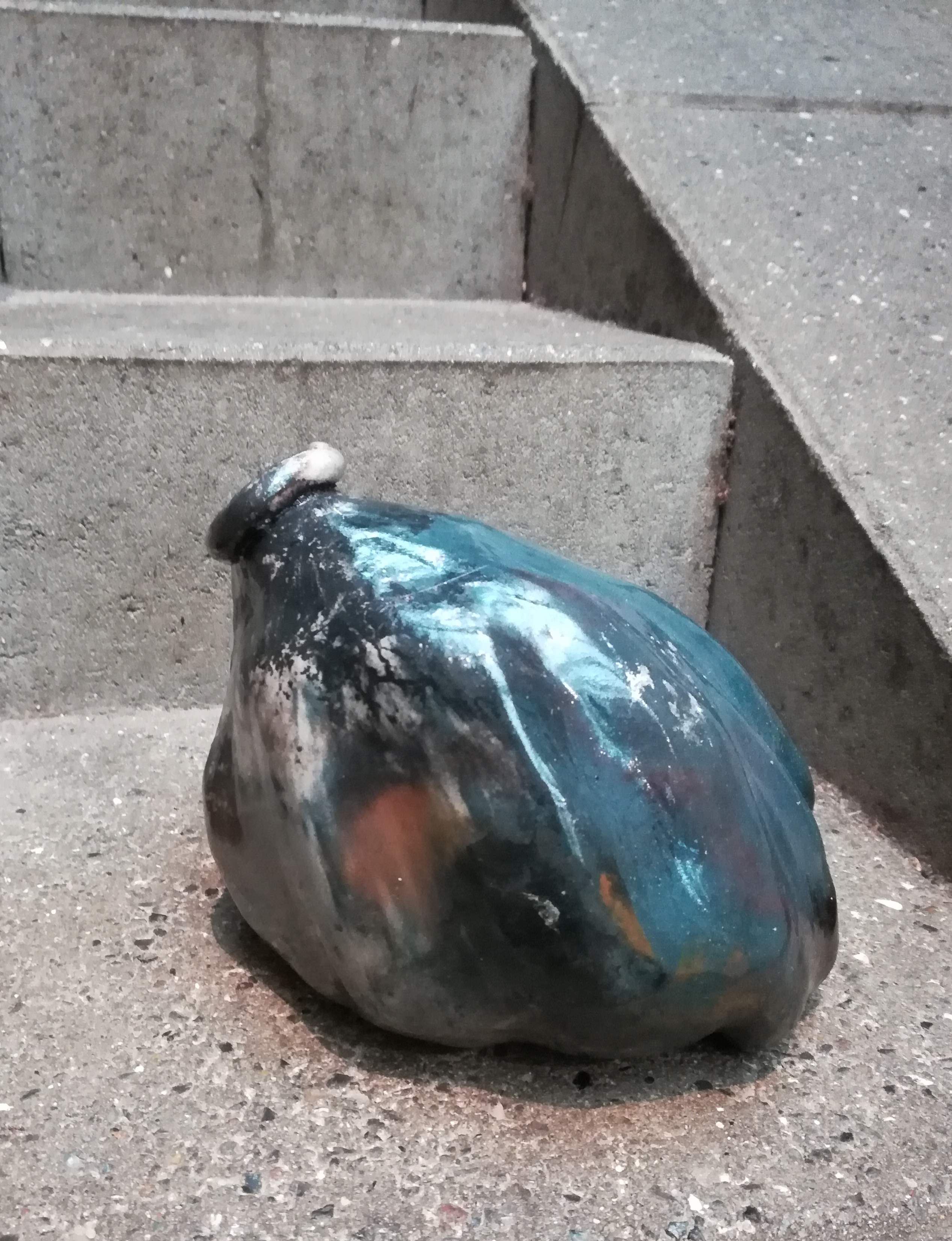
Vase. Washed and waxed. -
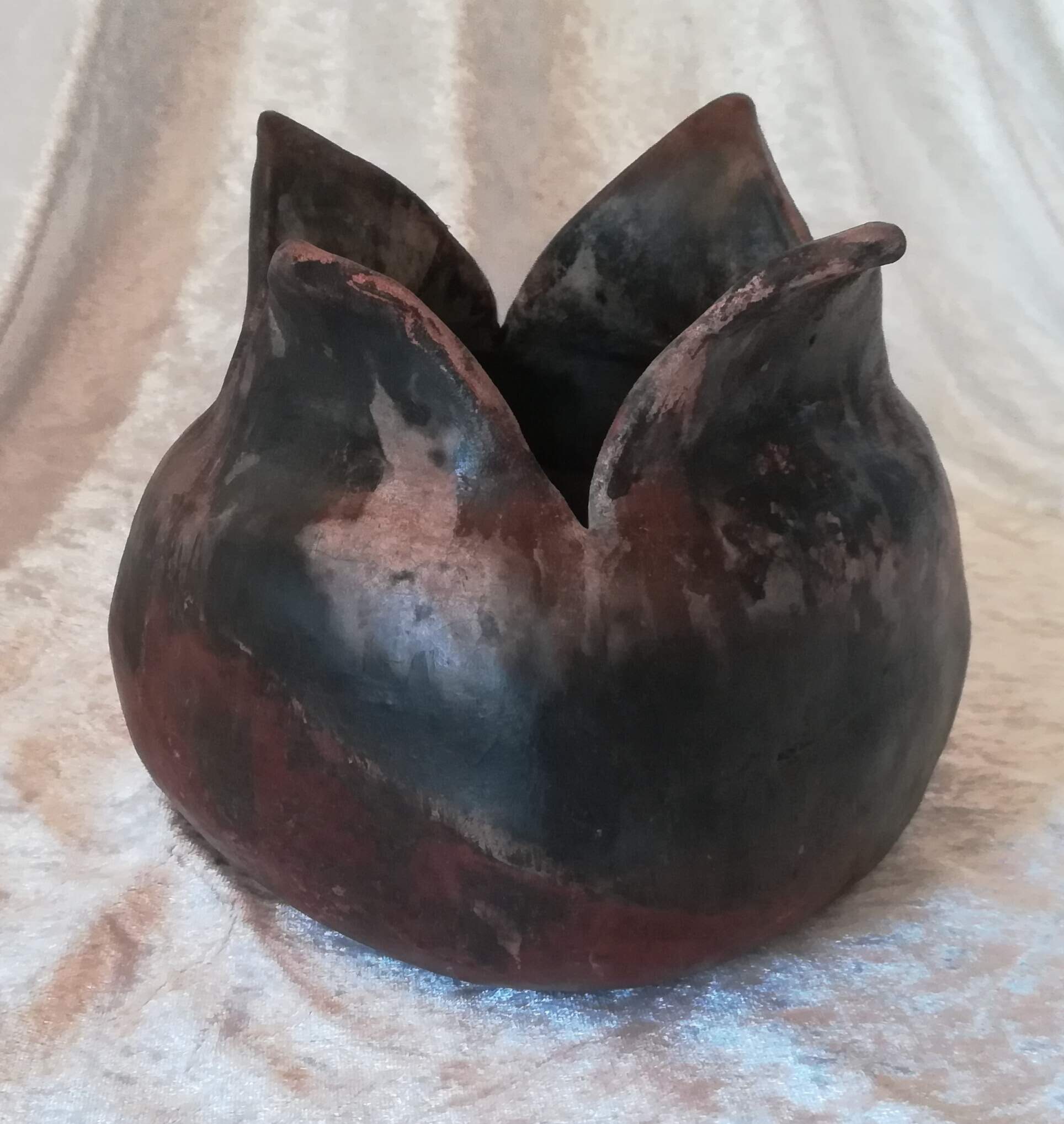
Pot. Washed and waxed. It has benefited well from the flames and was not wrapped during the firing. -
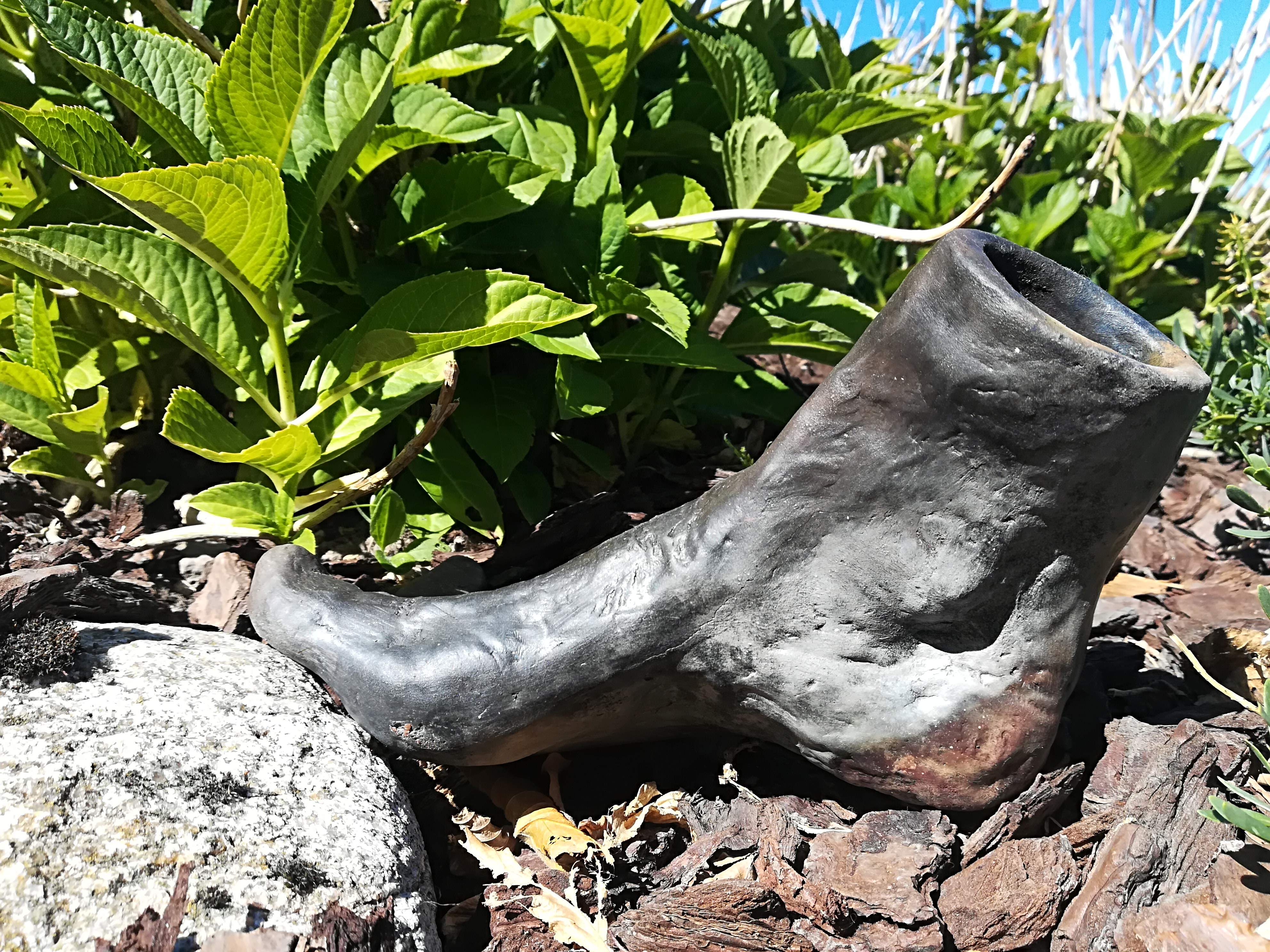
Foot. Has been reduced well during the firing (you can tell from the dark parts of the piece). -
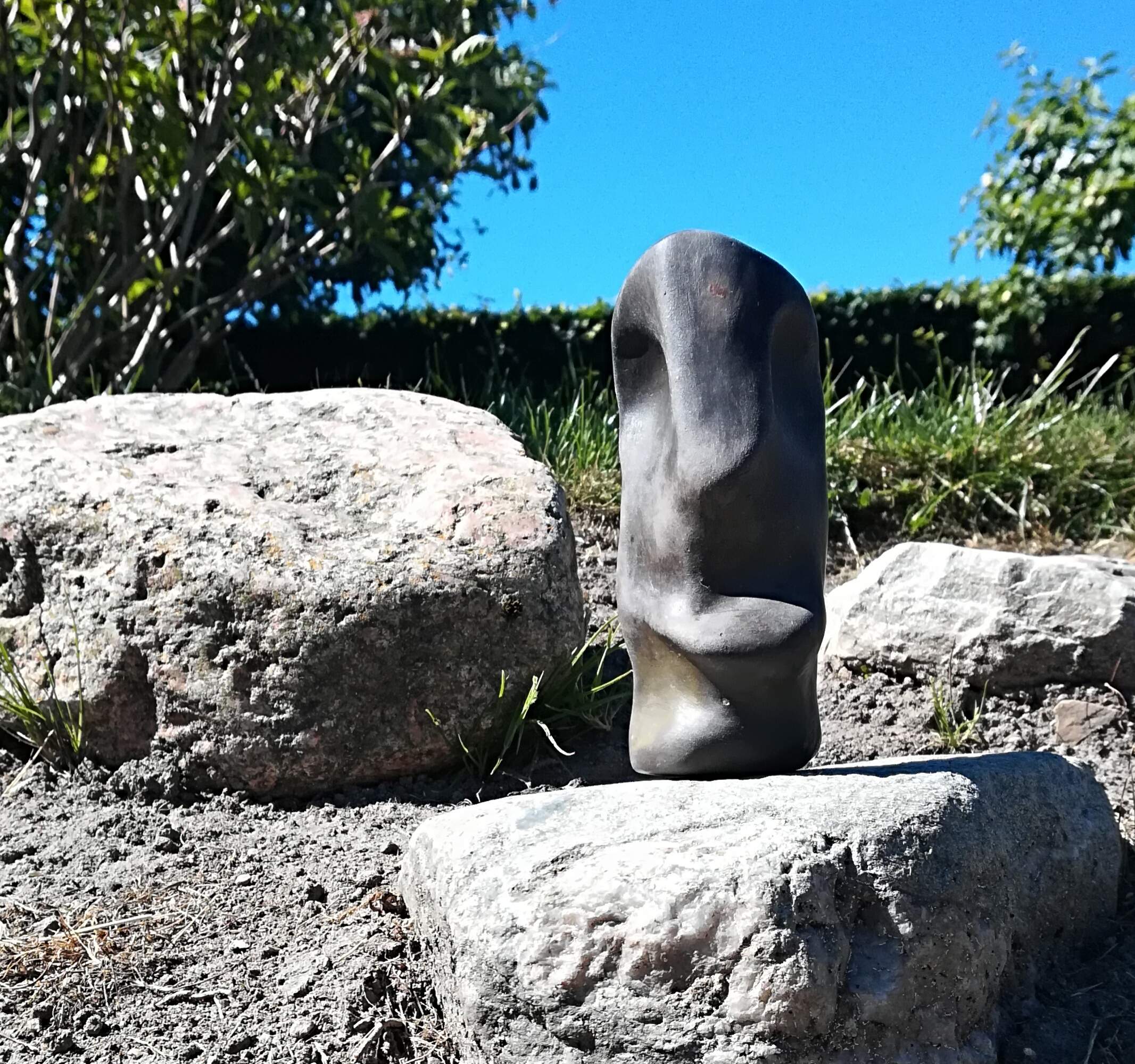
Figure. Washed and waxed. -
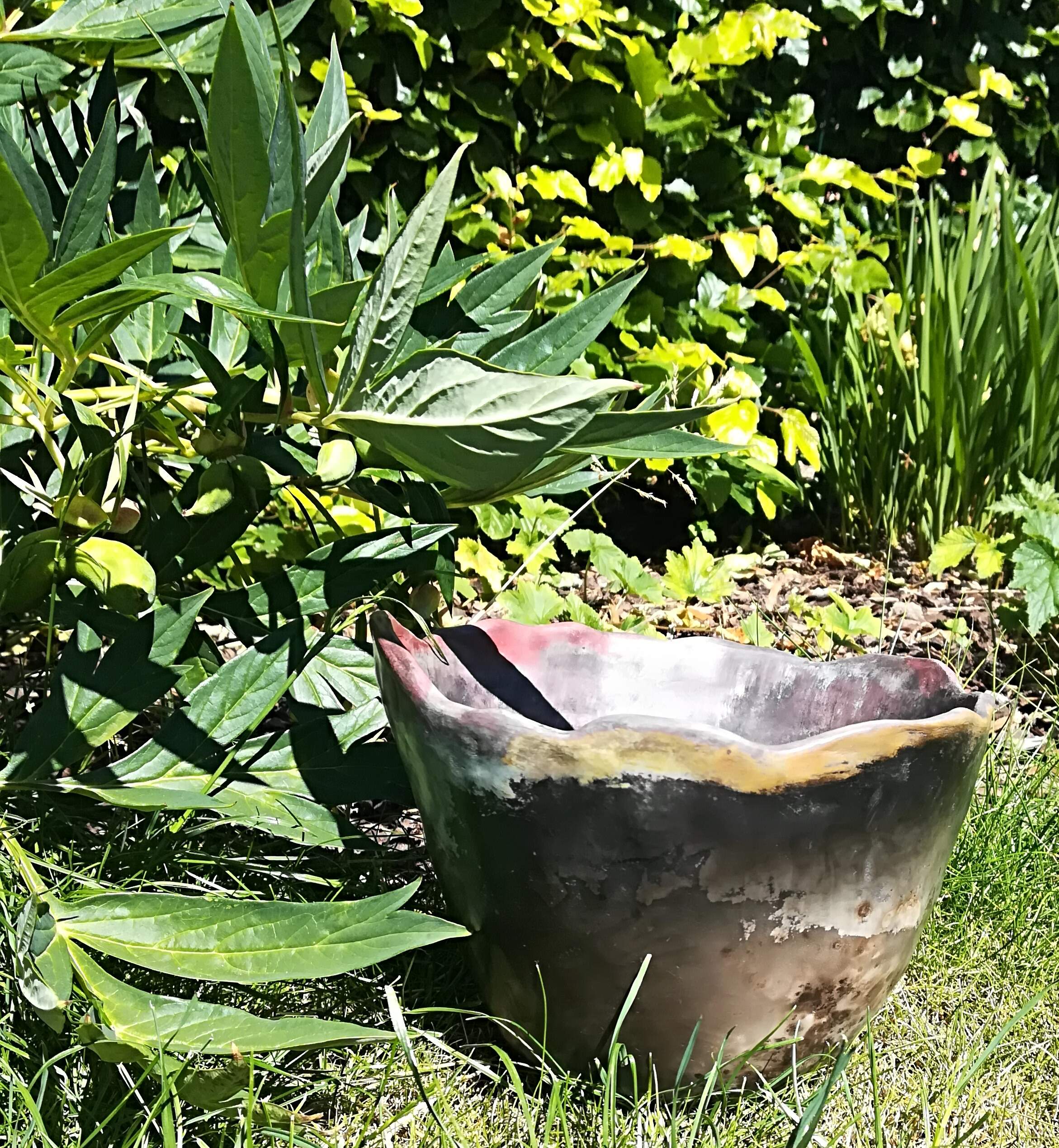
Pot. The one with the seashells from before. Flames and wood have done it well.































